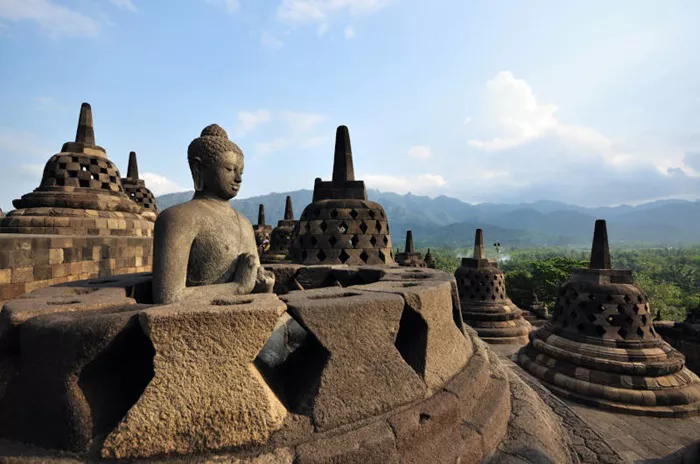Theravada Buddhism is one of the oldest and most traditional forms of Buddhism. It is sometimes called the “Teaching of the Elders” or “Way of the Elders.” Theravada focuses on the original teachings of the Buddha and emphasizes personal enlightenment through meditation and moral living. To understand where Theravada Buddhism is practiced today, it helps to know its origin and history.
Where Did Theravada Buddhism Begin?
Theravada Buddhism started in ancient India around 2,500 years ago. After the Buddha passed away, his teachings were preserved by monks called the Sangha. Theravada developed mainly from the Pali Canon, the earliest written texts of Buddhism. From India, Theravada spread to other countries through monks and traders, especially in Southeast Asia. This historical spread shaped the countries where Theravada Buddhism is strongest today.
Main Countries Practicing Theravada Buddhism
Theravada Buddhism is mainly practiced in Southeast Asia. These countries have large populations following Theravada traditions. The most notable countries include:
1. Sri Lanka
Sri Lanka is considered the heartland of Theravada Buddhism. It was introduced there around the 3rd century BCE by the monk Mahinda, son of the Indian Emperor Ashoka. Since then, Sri Lanka has preserved the Theravada tradition carefully. Monasteries, temples, and Buddhist education are central to the culture. Today, about 70% of Sri Lanka’s population practices Theravada Buddhism.
2. Thailand
Thailand is one of the largest Theravada Buddhist countries in the world. Theravada Buddhism is the official religion of Thailand. It influences daily life, festivals, art, and laws. Almost 95% of Thai people identify as Theravada Buddhists. The Thai monastic system is very active, with many young men spending some time as monks in their lifetime.
3. Myanmar (Burma)
Myanmar is another key country for Theravada Buddhism. It has one of the most devoted Buddhist communities globally. About 90% of the population follow Theravada traditions. Monks in Myanmar hold great respect and influence. The practice there includes meditation, chanting, and merit-making ceremonies.
4. Cambodia
Cambodia has a long history of Theravada Buddhism. It became the dominant religion after the fall of the Angkor Empire. Nearly 95% of Cambodians today are Theravada Buddhists. Buddhist temples and rituals play a vital role in community life, especially in rural areas.
5. Laos
In Laos, Theravada Buddhism is also the main religion. About 66% of the population follows it. Buddhist temples are found in every village, and the tradition strongly influences Lao culture and festivals. Many young Lao men become monks temporarily as a rite of passage.
Theravada Buddhism in Other Regions
Theravada in South Asia Outside Sri Lanka
While India was the origin of all Buddhism, today, Theravada is rare there. However, there are small Theravada communities in parts of India and Nepal, mostly among ethnic groups or immigrant communities.
Theravada Buddhism in the West
Theravada Buddhism has spread to Western countries like the USA, UK, Australia, and Canada. Immigrants from Theravada countries brought their traditions with them. Many Westerners also study Theravada teachings and meditation. There are several Theravada temples and meditation centers outside Asia today.
What Makes Theravada Unique in These Countries?
Theravada Buddhism in these countries shares common beliefs but also has unique local customs. Here are some features that stand out:
Monastic Life and Sangha
The monastic community, called the Sangha, is central to Theravada practice. Monks live by strict rules and serve as teachers and spiritual guides. Most Theravada countries have strong respect for monks, and families often support them by offering food and donations.
Focus on the Pali Canon
Theravada Buddhists follow the Pali Canon as their scriptural authority. These ancient texts are believed to be closest to the Buddha’s original teachings. The Pali language and its scriptures are studied deeply in monasteries, especially in Sri Lanka and Myanmar.
Meditation and Practice
Meditation practices in Theravada Buddhism emphasize mindfulness and insight (vipassana). This form of meditation aims to understand the true nature of reality and end suffering. Many meditation retreats are held in Theravada countries, attracting both locals and international practitioners.
Theravada Buddhism Meaning and Philosophy
The word “Theravada” means “Teaching of the Elders.” This shows the tradition’s focus on preserving the Buddha’s original teachings without much change. The main goal in Theravada is to become an Arahant — a person who has fully awakened and freed themselves from suffering. This is done through ethical living, meditation, and wisdom.
Conclusion
Theravada Buddhism is deeply rooted in several Southeast Asian countries, especially Sri Lanka, Thailand, Myanmar, Cambodia, and Laos. It preserves the Buddha’s original teachings with a strong monastic tradition and emphasis on meditation. Despite modern challenges, Theravada Buddhism continues to be a major spiritual force. Its influence is growing worldwide, offering a path of wisdom and peace for many.

